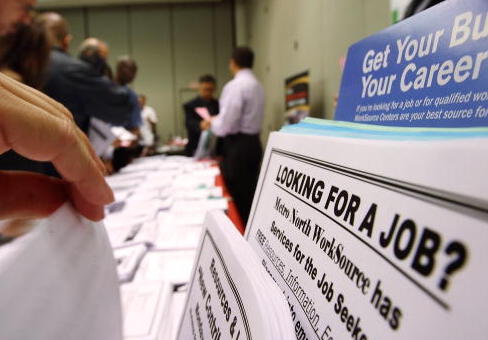The unemployment rate in December remained steady at 4.1 percent, while the number of employed Americans grew by 104,000, according to the latest numbers released by the Bureau of Labor Statistics.
The number of Americans who gained employment over the month of December grew from 153,917,000 to 154,021,000.
The civilian labor force level, which represents the number of people who participated in the labor force, also grew in December. There were 64,000 more Americans who joined the labor force in December, while 96,000 left.
The bureau counts those not in the labor force as people who do not have a job and did not actively seek one in the past four weeks.
The labor force participation rate, which is the percentage of the population that has a job or actively looked for one in the past month, remained steady at 62.7 percent from November to December.
While more Americans joined the labor force and found jobs in December, the number of unemployed also declined. In November, there were 6,616,000 Americans who were unemployed. In December that number declined to 6,576,000, a decline of 40,000.
The unemployment rate for all Americans remained steady at 4.1 percent in December, which is the lowest level in 17 years.
This measure does not account for those individuals who have dropped out of the labor force—it simply measures the percent of those who did not have a job but actively sought one over the month.
The "real" unemployment rate, otherwise known as the U-6 measure, increased from 8.0 percent in November to 8.1 percent in December.
There were 4,915,000 Americans working part-time in December who would rather have a full-time job but cited economic reasons for not having such employment. In January 2017, there were 5,776,000 part-time workers who wanted full-time work. This means that since the beginning of the year, this metric declined by 861,000 individuals.
According to the bureau, involuntary part-time workers are "persons who indicated that they would like to work full time but were working part time (1 to 34 hours) because of an economic reason, such as their hours were cut back or they were unable to find full-time jobs."
According to the National Federation of Independent Business, an improving economy meant it was harder to find qualified workers.
"We've been watching this problem build for the last 12 months, but it seems to have reached a critical point in December," said NFIB president and CEO Juanita Duggan. "Small business owners are converting their optimism into action, and a majority cannot find enough workers to meet higher customer demand."
"Finding qualified workers is now the second biggest concern for small business owners," said NFIB chief economist Bill Dunkelberg. "Taxes occupied the top spot all of last year, but that may drop as the recently enacted tax reform law takes effect. The worker shortage could very well become the number-one problem for small businesses."
